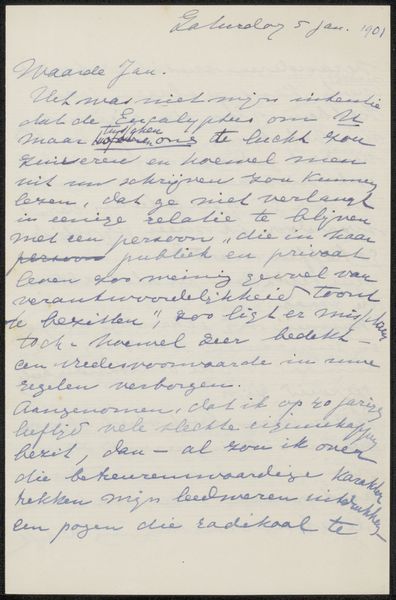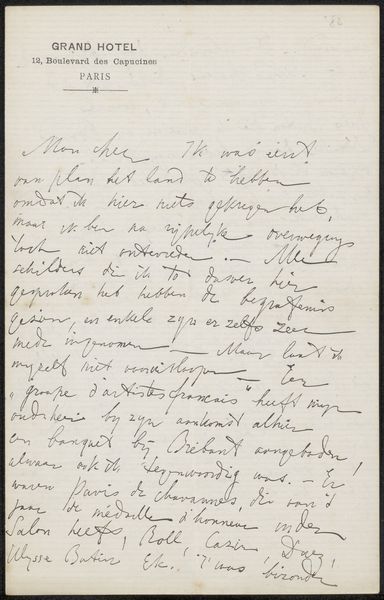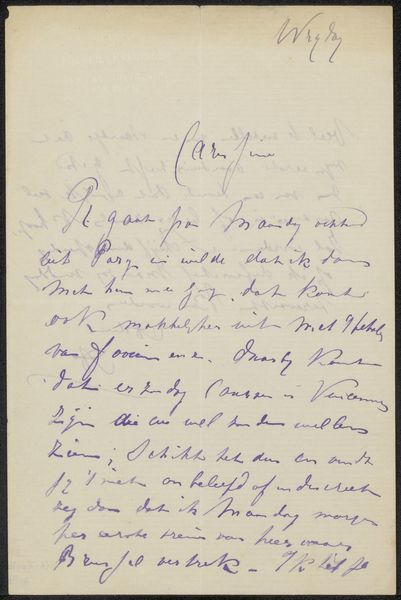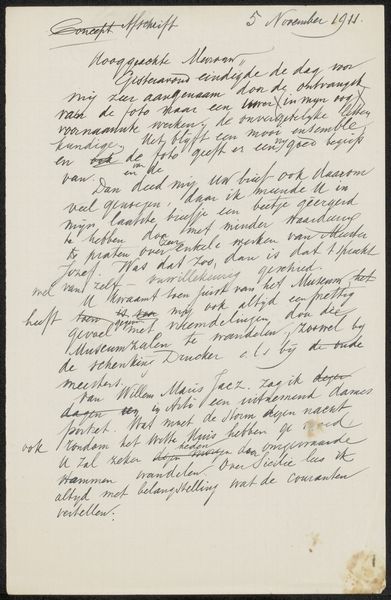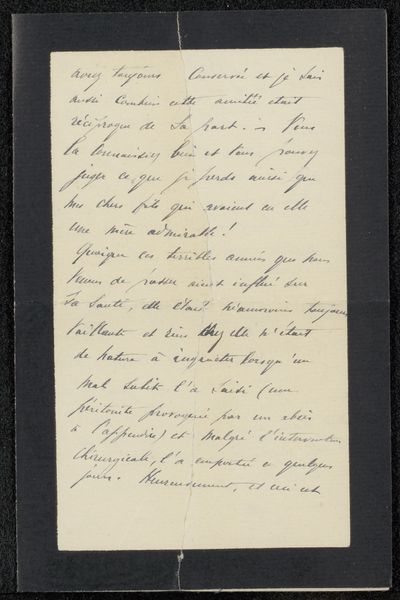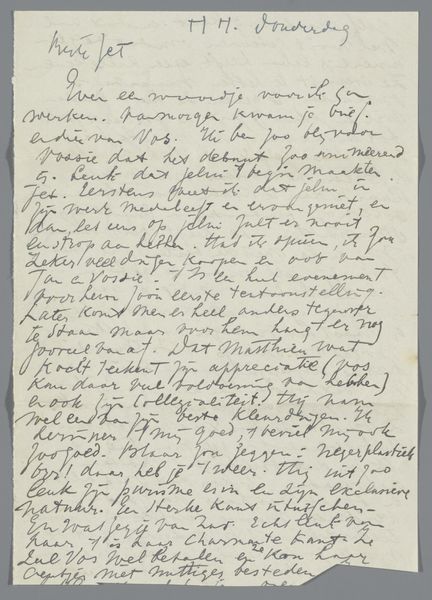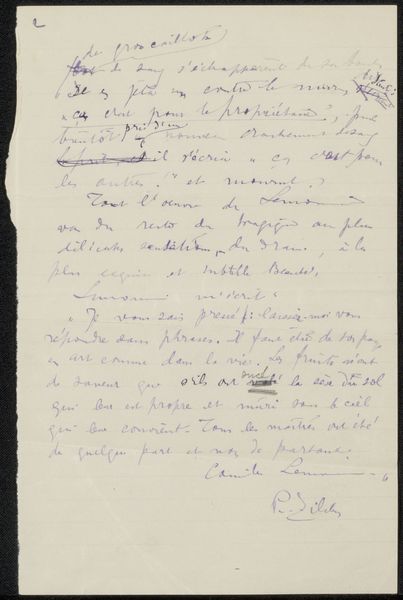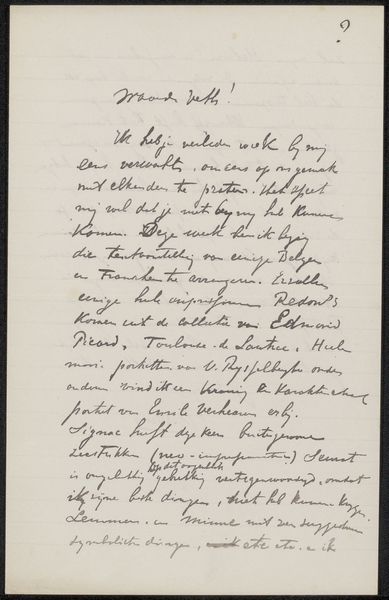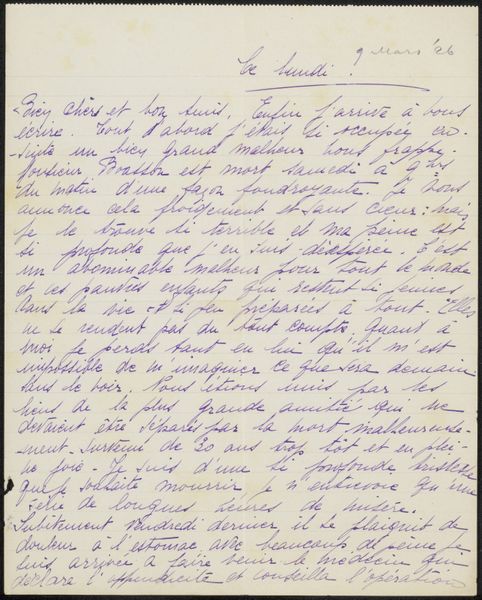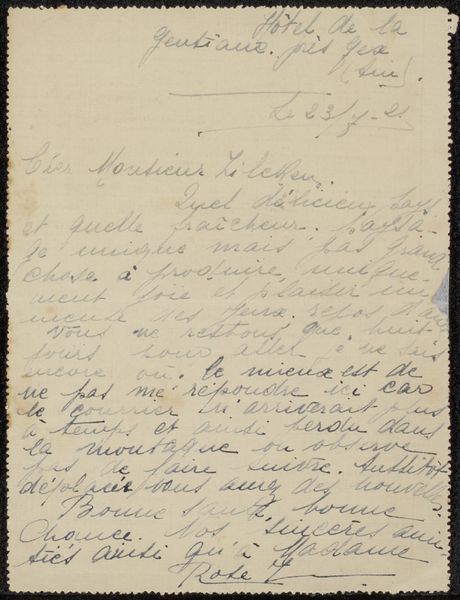
drawing, paper, ink
#
drawing
#
dutch-golden-age
#
paper
#
ink
Copyright: Rijks Museum: Open Domain
Curator: Looking at “Brief aan Jan Veth,” from approximately 1874-1925, one is immediately struck by the rhythmic elegance of the script. Editor: Yes, there's a lyrical quality to the line work; it almost resembles an abstract drawing more than mere handwriting. Curator: The piece, crafted with ink on paper, allows us to study the very essence of Van der Valk's thought process. Editor: Do we know more about the nature of this exchange? Curator: Details suggest a casual update; mundane happenings elevated to something… more, precisely because it appears unmediated. Editor: Agreed. Note how the pressure of the pen varies, thickening on the downstrokes—revealing a careful deliberation behind each stroke. How does this note figure in Van der Valk’s broader production? Curator: “Brief aan Jan Veth” serves as a unique sociohistorical marker; this particular Dutch artist moved through significant shifts. We might observe from this singular primary document an insight into an intimate side of van der Valk the world otherwise might overlook. Editor: Beyond that immediate cultural history it evokes, do you think the very material presence and formal composition influence meaning? For instance, what effect comes into play as legibility diminishes across the whole? Curator: Ah, here the image itself begins to mirror an idea: our limited access. Meaning, like these characters rendered now indecipherable—can seem always just out of reach. Editor: Absolutely. And reflecting on its aesthetic weight overall, despite not ‘understanding’ this letter, I appreciate even still Van der Valk's engagement with text as artistic subject here at the Rijksmuseum. Curator: Precisely; such material engages various dimensions to which even seemingly ordinary artworks contribute.
Comments
No comments
Be the first to comment and join the conversation on the ultimate creative platform.
